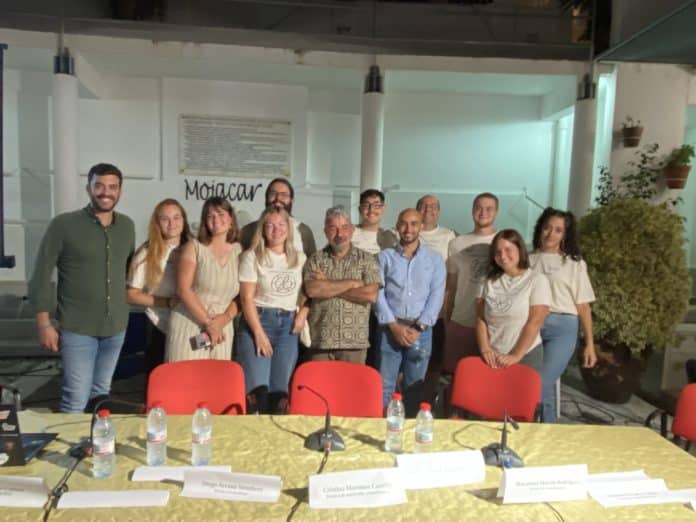After a month of work at the Mojácar la Vieja excavation site, the University of Granada team of archaeologists presented the results and provisional conclusions of their work throughout the month to local residents at the Mojácar fountain.
Following the welcome by the locality’s Mayor, Francisco García Cerdá, and his thanks to the team of archaeologists from all over Spain, the members of the research team, by speciality, told the audience about the different discoveries made throughout this campaign.
José María Martín Civantos, coordinator of the University of Granada MEMOLab Biocultural laboratory, highlighted in his conclusions, first of all, the potential that was visible from the first year and that continues to be demonstrated as the area of excavations is expanded.
Not only in the fortified area, with its two walls, one in the upper area where the military fortification area was found and the Almoravid state and the beginning of the Nasrid state were represented, but also in the lower part, the area of dwellings and above all a monumental defence, with up to 18 towers that surrounded the entire hill, and with a tower gate. In case there was any doubt about its importance, last year they located another more external one, a double wall, which made the fortification more complex.
This year they have been excavating outside the exterior wall and it has allowed them to identify what the small town was like, how the people of Mojácar lived between the 12th and 13th centuries.
Urban planning is being discovered, with houses around patios and homes that seem to have two levels, silos, earthenware jars for collecting water from the terraces, filtering it and making it drinkable, bedrooms, kitchens and elements that are related to the textile industry, the transformation and conservation of food, a community oven and a quarry from which materials for construction and many other elements were obtained.
Along with the urban planning there appear remains of pottery, demonstrating that it was made in the settlement, and of fauna. The spine of a cetacean is noteworthy, very odd, and with very few examples in the Medieval context. Also striking is the discovery of a cooking pot with snails, which was not a food allowed by their religion. To give an idea of the food and their way of life, it has been possible to locate a kitchen with a deep dish or platter with remains of food that would be served at the table. Next to a couscous pot. It is described as the “last supper” of Mojácar la Vieja by its discoverers. There are also seeds which demonstrate the flora of the area.
All of this together is giving a complete and at the same time more complex image of
Mojácar la Vieja, although it remains unclear how this first settlement emerged.
For this reason it is very important to know what the environment was like, the territory. Whether they were people who lived in small farmsteads and there emerged a process of population concentration directed by the state to improve defence, or whether it is a general tendency that makes families come together and form small towns like Mojácar la Vieja, which did not have the category of Medina (city), but which they start to increasingly resemble. What is clear is the presence of the state and its representatives.
It is the head of a district, what today would be a municipality; in fact it is the origin of the structuring of the territory that still exists, with an administrative head where there is the state representation, around which there are rural hamlets that are always in connection with the productive activity that is essential for life.
In order to interpret the origin of Mojácar la Vieja, for Martín Civantos and his team it is important to recover all the information that is disappearing: irrigation canals, waterwheels, mills, and with them the memory of all this heritage which is what has shaped the surrounding landscape of Mojácar, together with the beach and the mountains.
Among their tasks, the archaeologists responsible for the excavations want to complete all this information and give it meaning to be able to transmit it to all residents and visitors, offering a cultural resource that has to be an engine of social and cultural development for the locality, a binder to create community and identity.





